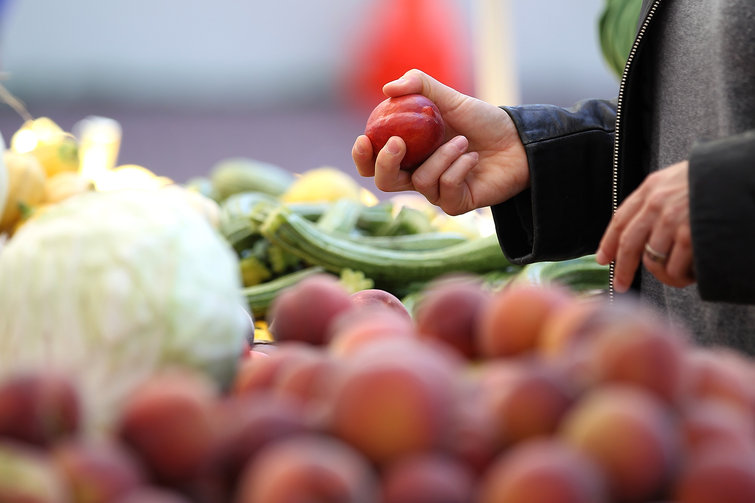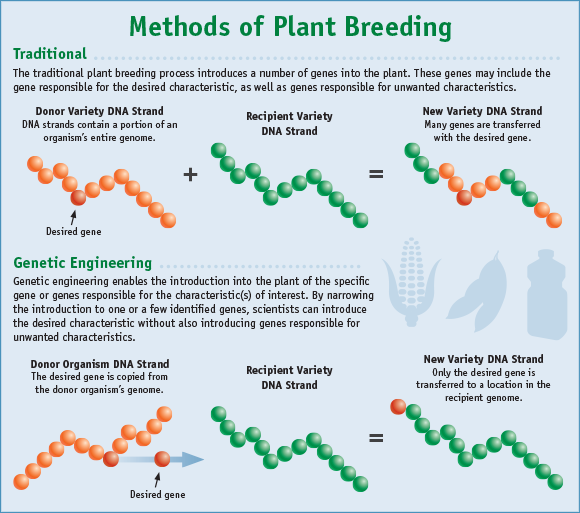Here's what 9,000 years of breeding has done to corn, peaches, and other crops

Fruits and vegetables have changed a lot since the onset of
agriculture 10,000 years ago, as generation after generation of farmers
artificially bred crops to select for more desirable traits like size
and taste.
But that change can be hard to visualize. So James Kennedy, a chemistry teacher in Australia, created some terrific infographics to show just how drastic the evolution has been. This one, for instance, shows how corn has changed in the last 9,000 years — from a wild grass in the early Americas known as teosinte to the plump ears of corn we know today:

The evolution of corn (maize) is a fascinating story. For a long time, scientists couldn't figure out where domesticated corn originally came from — it doesn't look like anything that grows in the wild. It took serious sleuthing by geneticists, botanists, and archaeologists to figure out that maize split off from teosinte grass some 9,000 years ago. (The two are surprisingly similar at the DNA level, differing by just a handful of genes.)
As maize became domesticated in Mesoamerica, it was radically altered through selective breeding. Early farmers would examine their plants and save the seeds of those that were larger, or tastier, or whose kernels were easier to grind. By 4,000 BC, cobs were already an inch long. And within just a few thousands years, cobs had grown to many times that size.
Nowadays, corn is grown all over the planet and selective breeding is still ongoing — though in recent decades it's also been combined with genetic engineering. Scientists have inserted genes from Bt soil bacteria into corn in order to ward off pests. And some researchers are now hoping to develop corn varieties that can withstand drought. And so on.

Here's another great graphic from Kennedy. Modern-day watermelons don't look anything like their distant ancestors from southern Africa. That, too, is the result of thousands of years of breeding. Yet a few of the biggest advances also came in the United States in the 1950s and 1960s, when crop scientists helped breed varieties that were resistant to disease and had a thicker rind — allowing watermelons to be grown all over the country.

Mind you, not all attempts at selective breeding turn out so well. As Sarah Yager recently wrote at The Atlantic, apple-growers in the United States during the 20th century tried to breed Red Delicious apples to be as bright and shiny as possible and stay on shelves for as long as possible without noticeable bruising. The result? "As genes for beauty were favored over those for taste, the skins grew tough and bitter around mushy, sugar-soaked flesh." Nowadays, as storage and transport have become more advanced, tastier apple varieties like the Honeycrisp or Gala are surpassing the Red Delicious.
(Thanks to Calestous Juma for the pointer to Kennedy's blog.)
* Correction/update: An earlier version of this post implied that seedless watermelons were also produced through selective breeding. That's not really a good description — the chemical colchicine is used to double the number of chromosomes in a watermelon. The resulting watermelon is then bred back with a regular watermelon to produce a new plant with no seeds.
A related earlier story: "Traditional crop breeding" isn't nearly as traditional as you think
Another related earlier story: Those ubiquitous "all-natural" labels on food are meaningless. Let's get rid of them.
How GMOs conquered the United States.
But that change can be hard to visualize. So James Kennedy, a chemistry teacher in Australia, created some terrific infographics to show just how drastic the evolution has been. This one, for instance, shows how corn has changed in the last 9,000 years — from a wild grass in the early Americas known as teosinte to the plump ears of corn we know today:
The evolution of corn

The evolution of corn (maize) is a fascinating story. For a long time, scientists couldn't figure out where domesticated corn originally came from — it doesn't look like anything that grows in the wild. It took serious sleuthing by geneticists, botanists, and archaeologists to figure out that maize split off from teosinte grass some 9,000 years ago. (The two are surprisingly similar at the DNA level, differing by just a handful of genes.)
As maize became domesticated in Mesoamerica, it was radically altered through selective breeding. Early farmers would examine their plants and save the seeds of those that were larger, or tastier, or whose kernels were easier to grind. By 4,000 BC, cobs were already an inch long. And within just a few thousands years, cobs had grown to many times that size.
Nowadays, corn is grown all over the planet and selective breeding is still ongoing — though in recent decades it's also been combined with genetic engineering. Scientists have inserted genes from Bt soil bacteria into corn in order to ward off pests. And some researchers are now hoping to develop corn varieties that can withstand drought. And so on.
The evolution of watermelon

Here's another great graphic from Kennedy. Modern-day watermelons don't look anything like their distant ancestors from southern Africa. That, too, is the result of thousands of years of breeding. Yet a few of the biggest advances also came in the United States in the 1950s and 1960s, when crop scientists helped breed varieties that were resistant to disease and had a thicker rind — allowing watermelons to be grown all over the country.
Even to this day, we're still producing new types of watermelon — like the black Densuke watermelon grown on a single island in Japan. And crop scientists have produced seedless watermelons by adding chemicals to double a watermelon's chromosomes and then breeding the result with a normal watermelon.*
The evolution of peaches

(James Kennedy)
And here are peaches, which started out in China and were selected
for size and juiciness over thousands of years. Note that the water
content of peaches has changed drastically in just 6,000 years.Mind you, not all attempts at selective breeding turn out so well. As Sarah Yager recently wrote at The Atlantic, apple-growers in the United States during the 20th century tried to breed Red Delicious apples to be as bright and shiny as possible and stay on shelves for as long as possible without noticeable bruising. The result? "As genes for beauty were favored over those for taste, the skins grew tough and bitter around mushy, sugar-soaked flesh." Nowadays, as storage and transport have become more advanced, tastier apple varieties like the Honeycrisp or Gala are surpassing the Red Delicious.
(Thanks to Calestous Juma for the pointer to Kennedy's blog.)
* Correction/update: An earlier version of this post implied that seedless watermelons were also produced through selective breeding. That's not really a good description — the chemical colchicine is used to double the number of chromosomes in a watermelon. The resulting watermelon is then bred back with a regular watermelon to produce a new plant with no seeds.
Further reading
You can see many of Kennedy's other wonderful graphics on his blog. He also, for instance, had a fun series showing the ingredients inside bananas or strawberries.A related earlier story: "Traditional crop breeding" isn't nearly as traditional as you think
Another related earlier story: Those ubiquitous "all-natural" labels on food are meaningless. Let's get rid of them.
How GMOs conquered the United States.


No comments:
Post a Comment